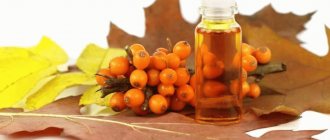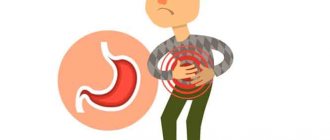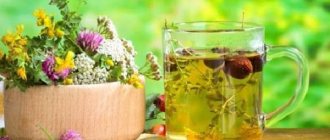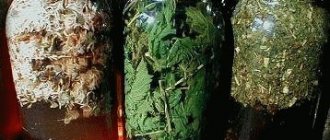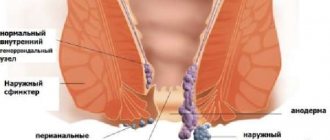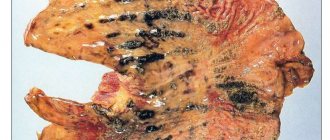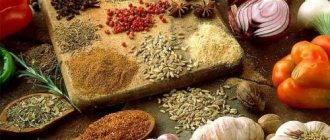What is gastritis
The constant increase in diseases of the digestive system is a consequence of the development of civilization, associated with the ability to produce food in large quantities.
The abundance of fast food establishments, temptingly shiny displays of prepared foods in supermarkets, eliminating the need to spend time preparing food at home - all this, if left uncontrolled, can quickly turn into serious health problems. Therefore, the word gastritis is familiar to almost every resident of a modern city. This is a collective diagnosis denoting an inflammatory process in the gastric mucosa, which leads to its degenerative changes. The causes of inflammation can be different.
Inflammation of the gastric mucosa, for example due to poor nutrition, is considered primary gastritis. Secondary gastritis develops against the background of general intoxication of the body or infectious diseases.
The consequence of a long-term pathological process on the gastric mucosa is a violation of its basic functions:
- secretory - inflammation disrupts the mechanism of gastric juice production, its enzymes not only break down food, but also protect the mucous membrane from physical and chemical damage;
- motor - the work of smooth muscles, which ensures the movement of digested food from the stomach into the duodenum, is hampered;
- endocrine - the process of producing hormones that regulate the functioning of the digestive system is disrupted.
Gastritis affects more than half of the world's population. In Russia alone, over the five-year period from 2013 to 2022, the incidence increased by 7% - from 3.8 to 4.1 million people or 20,806 cases per 100 thousand population.
It has now been clinically proven that in most cases the cause of gastritis is Helicobacter pylori infection. This bacterium colonizes the gastric mucosa. More than 50% of the world's population is infected with H.pylory, but the majority of those infected have no symptoms of the bacteria. However, in some people the bacterium provokes the development of atrophic gastritis, stomach and duodenal cancer.
The risk of gastritis increases with age: most patients are people over 60 years of age. Also at risk are people with high or low stomach acidity, which leads to:
- love of spicy and fatty foods;
- a large amount of citrus fruits in the diet;
- alcohol abuse, cocaine addiction.
At risk are also people with weakened immune systems due to previous infectious diseases and those with various systemic pathologies of internal organs.
Inflammation of the gastric mucosa can be a consequence of taking certain antibiotics, nonsteroidal anti-inflammatory drugs, glucocorticoids, and certain heart medications.
The use of alcohol-containing tinctures
Extracts of beneficial substances are not always well released by boiled water. Therefore, some tinctures are prepared by aging for 10–14 days in vodka or 70-degree alcohol. Their use always requires additional dissolution in milk or water. Contraindicated for children, pregnant women, and people being treated for alcoholism.
In the pharmacy chain you can buy tinctures of propolis, Japanese Sophora, and aloe. It is recommended to take 10–15 drops three times a day. You can make your own tincture from aloe and Kalanchoe. To do this, do not forget the following:
- a week before cutting the leaves, the plant is removed from the light;
- Fleshy leaves that are at least three years old are used;
- After cutting and washing, they are placed in the refrigerator for 3 days.
Kalanchoe juice is obtained by pressing
Add 500 ml of vodka to 100 ml and leave for 45 days. It is recommended to take a tablespoon on an empty stomach with the addition of honey.
Types of gastritis
Classifications of gastritis have been developed by scientists from different countries. In clinical practice, Russian medical institutions use the Houston classification, developed on the basis of clinical and morphological criteria. In it, gastritis differs according to several characteristics:
- The nature of the course of the disease. The main types of gastritis are acute and chronic. There are also special types of pathology - allergic gastritis, granulomatous, hypertrophic and some others.
- Area of inflammation. The pathological process may affect the mucous membrane of one of the sections of the stomach. When the mucous membrane of the entire stomach becomes inflamed, a diagnosis of pangastritis is made.
- Causes of inflammation. According to this criterion, 3 types of gastritis are distinguished: autoimmune (A), caused by the bacterium H.pylory (B), and inflammation due to chemical toxic effects (C). Gastritis can also be caused by a combination of several reasons.
- Features of the process and the nature of changes in the mucosa. Gastritis can manifest itself as erosions on the mucous membrane, diffuse purulent lesions, and areas of tissue atrophy.
- Concentration of hydrochloric acid in gastric juice. Stomach acidity during gastritis can remain normal, increase or decrease.
According to other common classifications, gastritis is divided by the degree and activity of inflammation, by phases - exacerbation and remission, by subsequent complications, etc.
Figure 1. H.pylory in the stomach with gastritis. Source: verywellhealth.com
Gastritis (inflammation of the stomach lining)
Gastritis is limited only to the mucous membrane of this important organ of the digestive system. To understand the characteristics of this type of pathology, you need to understand the structure of the stomach and its epithelium.
The stomach is a hollow muscular organ, the inner layer of which protects the muscle wall from the aggressive effects of hydrochloric acid produced during digestion. In normal condition, the mucous membrane retains its integrity and ability to rapidly regenerate cells, due to which it absorbs water well.
The cells of a healthy gastric mucosa are renewed very quickly - within 4-5 days. With prolonged exposure to negative factors, epithelial cells lose their protective function, and pathological changes begin in the mucosa. As a result of this process, gastritis develops.
Depending on the duration of the influence of negative factors and the intensity of the impact, two forms of gastritis are distinguished:
- Acute - occurs suddenly due to a severe allergic reaction, overeating, large amounts of alcohol consumed and other reasons. It manifests itself as severe pain after eating, heartburn, and nausea. With timely and correct treatment, the manifestations of acute gastritis disappear within a week.
- Chronic - occurs in the absence of treatment for acute gastritis or as an independent pathology. Symptoms of inflammation are not as pronounced as in the acute form, or are completely absent. Unlike acute gastritis, a chronic disease is characterized by more extensive damage to the gastric mucosa.
Gastritis goes through several stages in its development:
- redness and swelling of the gastric mucosa as a response to factors that provoke inflammation;
- thickening and chronic inflammation of the mucous membrane and changes in the epithelium of the stomach;
- thinning and atrophy of the mucosa with replacement of epithelial cells with scar tissue;
- the appearance of erosions and ulcers on the mucous membrane.
Important! A timely visit to a gastroenterologist at the first symptoms of gastritis will help determine the cause of inflammation and prevent further development of the pathological process.
Duodenitis (inflammation of the duodenal mucosa)
The inflammatory process can develop in other parts of the digestive system. Duodenitis is a lesion of the mucous membrane of the duodenum, the organ immediately following the stomach.
The function of the duodenum is to “process” food that enters it from the stomach with enzymes that are part of the pancreatic juice and prepare the bolus of food for absorption in the intestine.
The inflammatory process leads to dysfunction of this organ and the development of serious pathologies.
The cause of inflammation is the same as with gastric gastritis, in 90% of cases it is Helicobacter pylori. Chronic gastritis and other systemic pathologies can lead to the development of the disease. Among them: pancreatitis, cholecystitis, malignant neoplasms of the digestive system and others. In the vast majority of cases, duodenitis is a secondary disease; it occurs in acute or chronic form.
Duodenitis often develops in children, since their endocrine system has not yet fully formed. In adults, the risk group includes people suffering from food allergies, alcohol abusers, workers in hazardous industries, as well as people who have an unbalanced diet.
How to treat gastritis with vegetable oil?
The use of oils in traditional methods of treating gastritis is not disputed by official medicine. The consistency and composition undoubtedly have beneficial properties and help with exacerbations and chronic diseases of the gastrointestinal tract. Please pay attention to the purchase and expiration date of the medications.
For therapeutic purposes, you need to buy fresh, first cold-pressed oil. A shelf life of no more than 6 months is suitable (preferably the first 3 months). Let us remember that some oils are still used in the culinary industry and for technical purposes. Therefore, you need to monitor sales attempts.
The process of obtaining oils is quite complicated for home use. It is better to purchase drugs from a pharmacy chain or specialized stores. It is enough to add any oils to food (not hot), you can drink one tablespoon on an empty stomach.
Olive oil differs from sunflower oil in its high content of unsaturated fatty acids and vitamins K, A, E, D. Helps with gastritis and for healing stomach ulcers. It has been proven to contain special substances that prevent the development of cancer.
Sea buckthorn oil is suitable for the treatment of all types of gastritis, especially those with increased acidity. Has good wound healing properties. In folk medicine, recipes are offered for mixed use with honey, aloe juice, and propolis tincture.
Flaxseed oil is milder than olive and sea buckthorn oil; not everyone will like the taste and smell. However, taking a teaspoon orally before meals allows you to relieve pain, inflammation, and heal damage to the surface of the stomach.
It has a disinfecting effect on Helicobacter in the antrum and pylorus, and other pathogenic microorganisms in acute bacterial gastritis. Milk thistle oil is better known as an invaluable “helper” for liver dysfunction.
In cases of secondary gastric damage, it has a healing effect, is indicated after radiation and chemotherapy, stabilizes and limits tumor growth. Contains many biologically active nutrients, electrolytes and microelements, unsaturated fatty acids, carotenoids, in addition to fat-soluble B vitamins.
It has a known bactericidal, analgesic, and ulcer-healing effect. In chronic atrophic gastritis it is necessary to stimulate the immune system.
Safflower affects the process of microcirculation disorders, increasing thrombosis
Safflower oil contains 80% of the rare conjugated form of linoleic acid. Helps in the absorption of vitamins E and K. Does not contain squalene, like other oils, so it is recommended to combine it with other nutrients that enhance cell regeneration.
Effective when gastritis is combined with diabetes, a tendency to bleeding, impaired motor skills (has a high concentration of vitamins K and B). Contraindicated for pregnant women.
Causes
Source: graphicube/Depositphotos
Despite the fact that gastritis is the most common disease of the digestive system, the true causes of its occurrence were established relatively recently.
A revolution in gastroenterology occurred in 2005, when Australian scientists received the Nobel Prize for the discovery of Helicobacter pylori and the development of fundamentally new approaches to the diagnosis and treatment of gastritis.
Most pathogenic bacteria die in the stomach under the influence of hydrochloric acid, but Helicobacter pylori secrete urease, a special enzyme that neutralizes the effect of acid. The bacterium enters the body through household contact and through contaminated water and food. Having reached the stomach through the digestive tract, it begins to actively multiply on the mucous membrane. Colonies of harmful microorganisms destroy the epithelium, causing inflammation.
Although bacterial damage to the mucous membrane of the stomach or duodenum is the main cause of the occurrence and development of gastritis, it is not the only one. Other factors include:
- Reflux. In some diseases of the digestive system, the contents of the intestines are thrown into the stomach. At the same time, bile irritates its mucous membrane. The combination of these negative aspects causes inflammation of the mucous membrane and its subsequent destruction.
- Chemical and radiation exposure. Inflammation of the mucous membrane can be triggered by the ingestion of heavy metal salts, salts, alkalis and other aggressive substances into the stomach. Damage to the mucosa can occur with radiation injury within 15 Gy.
- Poor nutrition. Dietary habits also significantly affect the acidity of the stomach. Inflammation of the gastric mucosa can be triggered by excessively hot or cold food, excessively hot seasonings, poorly chewed, hard foods, and abuse of sweet carbonated drinks.
- Alcohol abuse and smoking. Ethyl alcohol is a strong irritant to the gastric mucosa. Systematic consumption of alcoholic beverages is one of the main risk factors for the development of acute and chronic gastritis. Nicotine also causes inflammation, as it has a pronounced vasoconstrictor effect. Impaired blood supply to the mucous membrane leads to the occurrence of foci of inflammation.
- Altered reactivity due to antibody formation. Autoimmune gastritis often occurs against the background of certain diseases, for example, insulin-dependent diabetes mellitus.
In older people, gastritis often occurs with various chronic diseases: pathologies of the cardiovascular and nervous systems, malignant tumors, sepsis. Inflammation can also be a consequence of age-related fibrofatty changes in the gastric mucosa.
Ready-made herbal preparations
For those patients with stomach problems who want, but do not have the opportunity to prepare drugs according to traditional recipes, we can recommend purchasing ready-made dosage forms at the pharmacy:
- Plantaglucide in infusion or granules - from plantain;
- Romazulon – from chamomile flowers;
- Rotokan - a combination of chamomile flowers, calendula, yarrow herb;
- Iberogast - alcohol extract of the best herbal remedies (chamomile, bitter Iberian, celandine, licorice root, caraway, milk thistle, lemon balm, mint);
- Caleflon - from calendula flowers.
There are many recommendations for preparing gastric preparations and combinations. Everyone can choose the most suitable remedy.
Symptoms
Symptoms of gastritis are varied, their severity depends on the form and nature of the disease. The chronic course is characterized by periodic stomach pain and heartburn. The period of exacerbation is replaced by long-term and short-term remission, when a person is not bothered by stomach discomfort and is in no hurry to see a doctor.
The first signs of gastritis
Often, the first signs of inflammation of the gastric mucosa do not cause any particular concern in a person, and he can attribute them to poor quality food or general fatigue.
Important! Taking painkillers during attacks of gastritis will only improve the condition for a short time. Long-term use of analgesics will lead to increased inflammation and rapid spread of the pathological process.
What symptoms should you pay attention to first:
- A feeling of heaviness in the upper abdomen 20-30 minutes after any meal.
- Heartburn is a burning sensation under the breastbone that rises to the throat. Heartburn is characteristic of gastritis with increased stomach acidity.
- Nausea immediately after eating or with a long break between meals. The condition may be accompanied by bouts of vomiting with leftover food.
- Metallic taste in the mouth, belching with an unpleasant odor.
- White coating on the tongue.
- Decreased appetite.
- Drawing pain in the navel area, radiating to the back. This may be a signal of problems with the pancreas.
During periods of exacerbation, the temperature may rise to subfebrile levels (37.2 - 37.5), general weakness, chills, dizziness.
Symptoms can manifest themselves complexly or individually, but each of them is a reason to consult a gastroenterologist.
Important! Widely known remedies for heartburn and stomach pain can cause irreparable harm to health and give the opposite result.
There are also nonspecific signs of gastritis, which also require careful attention. These symptoms include: cracks in the corners of the lips, increased sweating, brittle nails, split ends, and excessive dry skin.
Later symptoms
If you ignore the first symptoms of the disease and do not treat it at the initial stage, gastritis develops into more severe forms. Significant damage to the gastric mucosa is accompanied by symptoms requiring emergency medical care:
- constant acute pain in the stomach, burning in the upper abdomen, radiating to other organs;
- vomiting mixed with pus or blood is a sign of excessive acid secretion and severe ulceration of the mucous membrane;
- black stool due to gastrointestinal bleeding;
- vomit, similar in color to coffee grounds, is a sign of destruction of the mucous membrane and bleeding.
Losing time when seeking emergency help can lead to serious complications, including death.
Figure 2. Memo - what to look for and suspect gastritis. Source: macrovector/Depositphotos
What is recommended for low acidity?
Initial signs of atrophy of the gastric glands are accompanied by focal damage to the mucosa. But the stimulating effect of herbal remedies helps to support the attenuation of the acid formation function.
Cabbage and carrot juice is a tasty and healthy remedy; half a glass of the mixture twice a day before meals is enough. An infusion of plantain leaves and seeds can be replaced with squeezed juice. It is indicated for the treatment of chronic gastritis.
A herbal tea for the stomach made from mint, chamomile, plantain, calamus and dandelion roots, and wormwood can be brewed in the morning in a volume of 0.5 liters for the whole day and taken before meals. It is recommended to combine the use of propolis tincture with herbal infusions.
If, in addition to the stomach, diarrhea is bothering you, it is advised to prepare: an infusion of equal parts of calendula, chamomile, nettle and plantain leaves, yarrow herb, with each dose add up to 50 drops of propolis tincture, an infusion of leaves of Ivan-tea (angustifolia fireweed) - known for its disinfectant property.
For diarrhea, you can choose a gastric collection
Diagnosis of the disease
A doctor can identify the disease by a number of characteristic symptoms. To find out the causes of the pathology, a comprehensive laboratory and instrumental examination is necessary; the nature and composition of further treatment depends on this.
Main types of studies for gastritis:
- Esophagogastroduodenoscopy is a study of the condition of the inner wall of the stomach using a device with a probe equipped with a video camera. The analysis helps to identify areas of affected epithelium and the presence of ulcers and erosions on the mucosa.
- X-ray with contrast to identify nodes and erosions.
- Intragastric pH-metry - determination of stomach acidity to prescribe specific treatment.
- The Helicobacter breath test is a modern and highly informative method for determining the presence of Helicobacter pylori in the body by analyzing the carbon concentration in exhaled air.
- Study of gastric juice to assess the secretory function of the stomach.
Mandatory laboratory tests - general and biochemical blood tests, stool analysis.
Reviews
Galina, mother of five-year-old Dima: My son suffered from food poisoning with acute gastritis, after which he refused to eat and lost weight. I was advised to make dandelion syrup. In the spring we collected flowers together. And it’s very easy to prepare: sprinkle sugar on each layer of flowers, it took 0.5 kg in total, then crush it and let it brew until the juice comes out. Kids love it, try it.
Elena, 45 years old: I always have milk and honey in the refrigerator. If my husband gets tired at work, he complains of stomach pain. Drink it warm and everything goes away.
Larisa, 56 years old: I recently learned about the beneficial properties of safflower oil. I have diabetes, so not everything can be eaten. Indeed, I noticed that the stomach pains disappeared.
Treatment of gastritis
Therapy should be carried out systematically, taking into account the characteristics and nature of the disease, the causes of inflammation, the presence of concomitant pathologies and data from a comprehensive examination.
The treatment regimen is prescribed only by a gastroenterologist; any self-medication is strictly excluded.
Diet for gastritis
Strict adherence to the diet prescribed by your doctor is an important component of effective treatment of gastritis. The diet is prescribed depending on the acidity of the stomach.
If you have low acidity, your doctor will help you develop an individual nutritional style. Products included in the diet should moderately stimulate the secretory function of the stomach. Main components of the diet:
- soups with low-fat meat or fish broth;
- porridge with water;
- dishes of boiled and stewed vegetables, fresh vegetables and fruits;
- dairy products.
If you have low acidity, it is not recommended to eat pickles, sauerkraut, or pickled foods. White bread and pastries, canned food, smoked meats, dishes made from any legumes, and garlic should be excluded from the diet.
Spicy foods and seasonings do not cause gastritis, but they irritate the gastric mucosa, increasing inflammation.
With high acidity, the diet provides for frequent split meals. Avoid spicy pickled foods, fatty meats and other foods that irritate the mucous membranes. In any case, a nutritionist or gastroenterologist will help you create a diet.
Only boiling and stewing of dishes is allowed; fried foods are strictly prohibited.
Folk remedies
Alternative medicine can only be used as a component of complex therapy and taken after consultation with the attending physician. Traditional medicine recipes can alleviate the general condition and reduce the severity of symptoms, but they are not able to eliminate the cause of the pathology.
Phytotherapy
Medicinal herbs can also be used in the treatment of gastritis only as an adjunct and after mandatory approval by the attending physician.
In folk medicine, decoctions and infusions of wormwood, plantain, oregano, licorice root and other medicinal plants are used to relieve symptoms of gastritis.
It is better to purchase ready-made medicinal herbal mixtures in pharmacies after consultation with your doctor.
Drug treatment
The choice of medications is determined by the type of gastritis and the cause of its occurrence. The main components of complex drug therapy:
- Antibacterial drugs depending on the causative agent of inflammation. In the presence of Helicobacter pylori, macrolides, tetracyclines and other groups of antibiotics are prescribed in combination with bismuth preparations. The choice of drugs when other pathogens are detected depends on their resistance to antibacterial agents.
- To normalize secretory function, proton pump inhibitors are used to reduce the production of hydrochloric acid or drugs with peptin to enhance it.
- Gastroprotectors are prescribed to protect the gastric mucosa from negative factors and preserve the integrity of the epithelium.
To alleviate the patient’s condition, sorbents are prescribed; according to indications, hormonal drugs, sedatives, antispasmodics, and others.
Gastritis in children
During the period of exacerbation, children are prescribed bed rest with abstinence from any food for at least half a day. Frequent drinking in small portions, gastric lavage or enema are indicated.
Any manifestation of gastritis in children requires immediate consultation with a pediatrician and strict adherence to his recommendations.
Antibiotics, absorbents and antireflux drugs are prescribed after identifying the causes of inflammation, taking into account the general condition of the child and the individual characteristics of his body.
What to include in your diet?
We will not describe a complete diet for patients with gastritis. Let us dwell only on the proposals of traditional medicine for especially healing products and describe what properties they have. The recommendations say that the catarrhal (superficial) form of gastritis can only be dealt with with the right diet and herbal medicine.
Green apples are recommended to be taken peeled, peeled, finely chopped or mashed for breakfast. It is enough to take 2-3 medium-sized apples. According to the prescription, the patient should not eat for 3 hours before and after consumption in order to prevent fermentation processes.
You can repeat another “apple feeding” during the day, but not at night. The course of treatment is 3 months: in the first month - eat daily, in the second - every other day, in the third - once a week. Quail eggs are one of the popular home remedies for treating gastritis. It is recommended to drink them raw half an hour before meals. It is acceptable to eat 2-3 eggs per day.
Complications of gastritis
Source: lacheev/Depositphotos
Neglect of medical recommendations and lack of timely treatment can lead to serious complications, including:
- the occurrence of stomach and duodenal ulcers;
- thinning of the gastric mucosa and its atrophy;
- internal bleeding and anemia;
- malignant formations in the organs of the digestive system.
Gastritis significantly reduces the quality of life, so timely diagnosis and proper treatment should be a priority at the first signs of the disease.
Classification
There are several types of acute gastritis:
| Simple (catarrhal) gastritis | develops as a result of ingestion of stale food contaminated with pathogenic microbes (foodborne toxic infection), with rotavirosis, an allergy to some food product, or as a result of damage to the gastric mucosa by certain medications. With catarrhal gastritis, the mucous membrane is destroyed slightly (only the most superficial layer) and is quickly restored after the irritating factor ceases. |
| Erosive gastritis | develops after some concentrated acids or alkalis enter the stomach (chemical burn of the gastric mucosa). With corrosive gastritis, not only the superficial, but also the deep layers of the gastric mucosa are destroyed, so this form of the disease often gives rise to peptic ulcers or scar formation. |
| Phlegmonous gastritis | This is a purulent inflammation of the stomach, which can develop as a result of a foreign object (for example, a fish bone) entering the stomach wall, followed by infection of this area with a pyogenic infection. A distinctive feature of this type of gastritis is high fever and unbearable pain in the epigastric region. Phlegmonous gastritis requires immediate surgical intervention. Without medical assistance, the disease progresses to peritonitis (extensive inflammation of the abdominal organs) and ends in death. |
| Fibrinous gastritis | occurs very rarely against the background of sepsis (blood poisoning). |
Gastritis has many varieties. A brief description of each type can be found below:
| Low acidity | insufficient concentration of acid in gastric secretions, which creates conditions for weak fermentation of incoming food. As a result, the walls of the stomach can be damaged by rough pieces of food, and the body does not receive the required amount of substances. |
| With high acidity | increased concentration of gastric juice, forming persistent, sometimes causeless heartburn. The atypical saturation of the enzyme fluid stimulates the formation of multiple ulcerations on the mucosa. |
| Atrophic | gradually leads to thinning of the epithelium of the stomach, degeneration of the glands into simpler forms and a decrease in the quality of the work they perform. Without corrective therapy, it can cause cancer. |
| Antral | develops against the background of infection by Helicobacter pylori culture, leading to focal modifications of the internal epithelium. The result of bacterial activity is scarring of the mucous membrane and insufficient formation of gastric secretions. |
In professional medicine, other classifications of gastritis are also used, including according to the type of distribution of pathogenesis:
- Autoimmune gastritis (type A);
- Exogenous gastritis (type B), provoked by Helicobacter pylori;
- Mixed gastritis (type A+B);
- Gastritis (type C), provoked by NSAIDs, chemical irritants or bile;
- Special forms of gastritis;
- Gastritis against the background of decreased and increased secretion of hydrochloric acid;
- Other forms of morphological and functional manifestations of gastritis.
Their differentiation involves the use of complex medical laboratory or instrumental techniques at the stage of diagnosing the disease. Therefore, a description of gastritis, which has approximately the same clinical symptoms, but differs in the underlying mechanisms of pathogenesis, is not of interest to a wide range of readers.
Let us dwell in detail on the main signs and symptoms of gastritis, which may serve as the basis for a person to contact a medical institution for help.
Lifestyle with gastritis
Recommendations for lifestyle correction are given by the attending physician, but following general simple rules will significantly improve the condition and avoid exacerbations:
- It is important to limit your alcohol consumption, it is better to quit smoking. A glass of wine with dinner, of course, will not lead to gastritis, but any alcohol in excess is a direct path to illness.
- Choose simple, minimally processed foods. Processed meat products, such as sausages and sausages, are best avoided completely.
- Drink more plain clean water. This will help normalize stomach acidity between meals.
- Develop healthy eating habits; while eating, it is better to chat with friends and family, rather than watching TV or scrolling through the news.
- The last meal should be at least 4 hours before bedtime.
And one more important recommendation: you should not endure pain! At the first attacks of exacerbation, consult a doctor.
Application of bee products
Honey and other products are non-toxic, well tolerated by patients, relieve pain, disinfect the gastric mucosa, accelerate healing by affecting the immune system, and normalize the function of acid formation.
It is recommended to take honey:
- one tablespoon 15 minutes before meals;
- on an empty stomach with cold water;
- along with herbal teas and infusions;
- with Kalanchoe juice.
Propolis is taken both in alcohol tincture and in an aqueous version. First, propolis should be kept in the refrigerator so that it hardens well. Then it is grated.
Pour boiling water in a ratio of 1:5 and leave in the “bath” for an hour. The result is a brown liquid. Stored in the refrigerator for no longer than a week. You can drink half a glass daily. In case of overdose, drowsiness and dizziness occur.
Bee products are contraindicated for people with allergies or diabetes
Folk remedies for gastritis
It is very important to take into account whether the acidity of the stomach is high or low.
- If you are worried about constipation in the anacid form of gastritis, you need to take laxatives based on buckthorn bark and rhubarb.
- If the acidity is high, it is tedious to drink 100 ml of potato juice up to three times before meals every day.
- In autumn, gastritis can often worsen; in this case, you need to brew fresh blueberries and strawberries, consume 100 ml before meals.
- In cases of problems with appetite due to illness, herbalists recommend bitterness - decoctions based on dandelion, wormwood, and yarrow. It is good to add soothing herbs - valerian, motherwort and those that stimulate the stomach - licorice, calendula, plantain.
- If you have low acidity, you are advised to pay attention to this collection; it contains dandelion, calamus root, chamomile, calendula, St. John's wort, and plantain.
- For high acidity, this collection is recommended; it will require linden blossom, peppermint, calamus root, licorice, fennel, and flaxseeds.
Thus, gastritis must be treated at the initial stage so that it does not develop into an ulcer or cancer over time.
